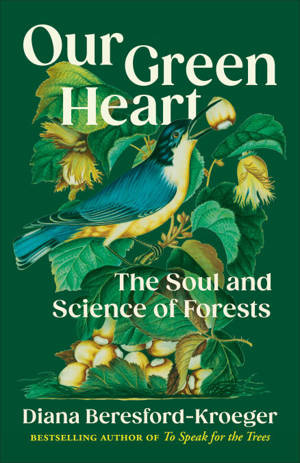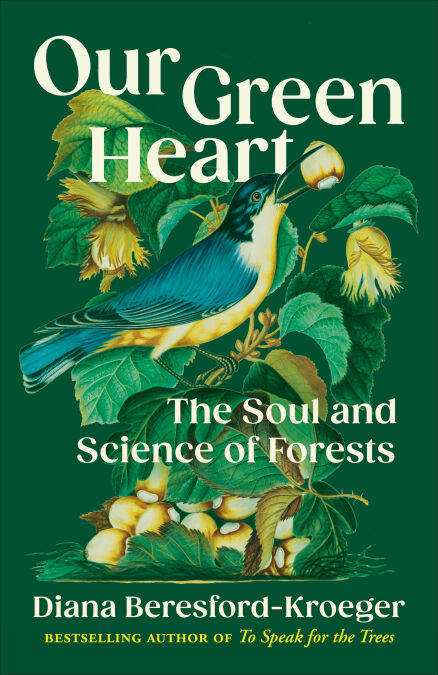
- Afhalen na 1 uur in een winkel met voorraad
- Gratis thuislevering in België vanaf € 30
- Ruim aanbod met 7 miljoen producten
- Afhalen na 1 uur in een winkel met voorraad
- Gratis thuislevering in België vanaf € 30
- Ruim aanbod met 7 miljoen producten
Zoeken
€ 24,65
+ 24 punten
Uitvoering
Omschrijving
AN INSTANT NATIONAL BESTSELLER
In this inspiring culmination of Diana Beresford-Kroeger’s life’s work as a botanist, biochemist, biologist and poet of the global forest, she delivers a challenge to us all to dig deeper into the science of forests and the ways they will save us from climate breakdown—and then do our part to plant and protect them.
As the last child in Ireland to receive a full Druidic education, Diana Beresford-Kroeger has brought an unusual and ancient holistic attitude to the science of trees, which has led her to many fresh insights into how closely we are tied to one another and to the natural world. Her influential message is to pay rapt attention to trees, because they are the green heart of the living world. Forests are our lungs, our medicine, our oxygen and the renewal of our soil. Planting the right trees in the right places, protecting the last virgin forests and working to create new ones is our best means to ensure a future for our children and grandchildren on this burning earth.
Each of the essays gathered in Our Green Heart show us a slice of the natural world through Diana’s unique lens, illuminating the way our health, individually and as a species, is tied to the health of the forest—a tie we ignore at our peril. She maps the science that still needs to be done—there is so much we don’t know about the ways trees and forests work—but also, eloquently, shows us the path to survival that her own science has revealed, the “bioplan” or blueprint for the connectivity of life in nature. If we realize that even the flowerpot on our doorstep is a natural habitat, and plant it according to its bioplan, we will be aiding and abetting life rather than destroying it.
In this inspiring culmination of Diana Beresford-Kroeger’s life’s work as a botanist, biochemist, biologist and poet of the global forest, she delivers a challenge to us all to dig deeper into the science of forests and the ways they will save us from climate breakdown—and then do our part to plant and protect them.
As the last child in Ireland to receive a full Druidic education, Diana Beresford-Kroeger has brought an unusual and ancient holistic attitude to the science of trees, which has led her to many fresh insights into how closely we are tied to one another and to the natural world. Her influential message is to pay rapt attention to trees, because they are the green heart of the living world. Forests are our lungs, our medicine, our oxygen and the renewal of our soil. Planting the right trees in the right places, protecting the last virgin forests and working to create new ones is our best means to ensure a future for our children and grandchildren on this burning earth.
Each of the essays gathered in Our Green Heart show us a slice of the natural world through Diana’s unique lens, illuminating the way our health, individually and as a species, is tied to the health of the forest—a tie we ignore at our peril. She maps the science that still needs to be done—there is so much we don’t know about the ways trees and forests work—but also, eloquently, shows us the path to survival that her own science has revealed, the “bioplan” or blueprint for the connectivity of life in nature. If we realize that even the flowerpot on our doorstep is a natural habitat, and plant it according to its bioplan, we will be aiding and abetting life rather than destroying it.
Specificaties
Betrokkenen
- Auteur(s):
- Uitgeverij:
Inhoud
- Aantal bladzijden:
- 216
- Taal:
- Engels
Eigenschappen
- Productcode (EAN):
- 9781039009806
- Verschijningsdatum:
- 2/09/2024
- Uitvoering:
- E-book
- Beveiligd met:
- Adobe DRM
- Formaat:
- ePub

Alleen bij Standaard Boekhandel
+ 24 punten op je klantenkaart van Standaard Boekhandel
Beoordelingen
We publiceren alleen reviews die voldoen aan de voorwaarden voor reviews. Bekijk onze voorwaarden voor reviews.








